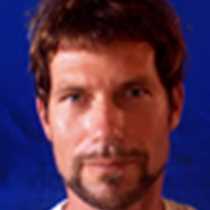Floreana Island
Floreana is one of the islands with a human history, and it was the first island colonized in the mid-1800s.
This has left a deep impact on its endemic fauna and flora, so much that the Floreana Mockingbird, still abundant during Darwin’s visit, is now only found on two small islets near Floreana.
Rats and cats roam and breed freely on Floreana, and until these two ferocious predators are eradicated there is no chance for the mockingbird to reestablish itself. With the mockingbird stands and falls an ecosystem that is key to island restoration, a job the Galápagos Conservation Fund is deeply involved with. As we understand more and more, we find everything is connected.
There are still people permanently living on Floreana. A small village on its west shore, Puerto Velasco Ibarra, tallies about 80 souls, and then there are a few farms in the hills with another 40 residents. Until recently these people were almost self-sufficient, but the tourism-fever has caught here as well as in other small communities in Galápagos, and the new generation wants more, like anywhere else.
A few years ago almost all the inhabitants of Floreana were interviewed during a two-month stay by four Spanish anthropologists, who were invited to do this by the Charles Darwin Foundation. The foundation fears a non-sustainable future development similar to communities on the other islands, and suggested that by ‘mapping’ the inhabitants’ ideals, maybe some future plans of the inhabitants could be directed into ‘safer waters.’ Things as agro-tourism come to mind.
It’s too early to tell if the project will be successful, but more significant than the actual project is maybe this; that until recently the inhabitants of these islands were always put in the negative light, whereas now they are seen as key-role players for the better future of the islands.
This you could call a sea change.
Today we won’t see any inhabitants of Floreana but the native and endemic ones. We start early at six in the morning, to see a very busy nesting site of green sea turtles. We pass a small shallow lake where we spot Great American flamingoes, as expected.
At first sight the nesting site looks completely destroyed, but it turns out that the tire tracks of big wheels are the ‘footprints’ of the female turtles who come ashore during the early morning hours. It is high season and we see many turtles in the surf, and even a few on the beach. Everyone is excited.
Later in the morning we hang out with the sea lions in very clear and warm water, while an occasional white tipped reef shark lumbers by.
After lunch and presentations in the lounge about photography and human history, we head out again for a Zodiac ride along the shore where we spot several shore birds, marine iguanas, and sea lions.
When the sun sets over a very calm sea our heads are filled with the many impressions today gave us, and many of us can’t believe that we are just in the first days of this journey.




